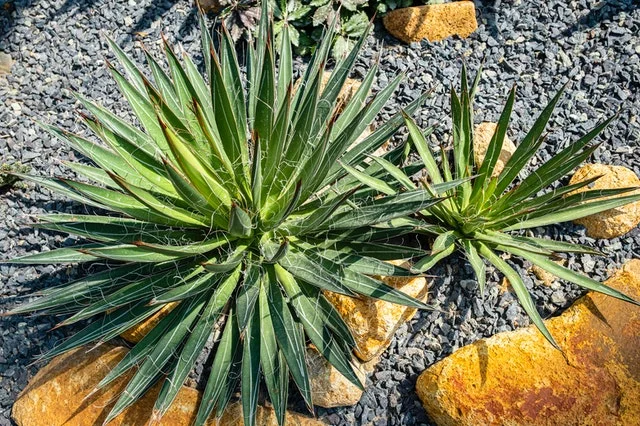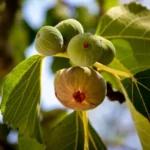Table of Contents
How To Care For banana yucca
Are you looking for a plant that provides the perfect balance between pretty and exciting? Something that will give your space that extra flair of Tropicana, whilst also blending well with your other flowers?
If you answered yes to any of those questions, the Banana Yucca could be the plant for you! Not only do they look fantastic, but they produce fruit that you can eat!
Despite the name, the fruit is not a banana, but it looks like one.
What does your banana yucca require?
Usually, the Banana Yucca is an outdoor plant. Being native to the desert, it’s used to getting plenty of direct sunlight.
However, as long as you can provide it with the right conditions, this plant can also be grown indoors. You don’t need to be an expert gardener to look after Banana Yucca.
You also don’t need to spend a lot of money on getting any unique heating systems installed, or any kind of expensive lighting. In America, most houses will be able to provide the conditions that Banana Yucca needs to survive.
Light Requirements
As you can imagine, Banana Yucca likes to have a lot of sunlight. Make sure to place it in a well-lit room with plenty of large windows. As with most other plants, natural light is always going to be better than artificial light.
Unlike many plants, this one can tolerate the full sun, and the light can be direct! Make sure to give it a minimum of 6 hours of sunlight a day. But don’t think that means it can’t have more than six- quite the opposite!
In case you’re wondering what direct sunlight is, it’s just sunlight with nothing blocking it.
Some tropical plants will require indirect sunlight, which can be achieved by blocking windows with other plants. This is not the case for Banana Yucca.
Temperature Requirements
Banana Yucca is made for the desert. It’s designed for scorching climates.
Ideally, you want to keep it at around 60-80F. However, we respect that getting your home up to this temperature is likely easier said than done.
Despite loving the desert heat, Banana Yucca is better than you might think in colder climates. 20F is the minimum temperature it needs to survive. However, that temperature is far from ideal.
The best thing to do is just place it into whichever room in your house happens to be the warmest.
Soil Requirements
As with most other plants, Banana Yucca needs the soil to be easily drainable. Too much water will prevent it from being able to absorb any of the nutrients in the ground.
But this problem is easy to solve by ensuring there is a hole in the pot where the excess water can escape from.
Being a desert plant, Banana Yucca is used to having to conserve water. So be sure not to overwater it! A light watering once a week or so will be sufficient.
Humidity Requirements
One thing Banana Yucca would not experience in its natural habitat is humidity. Which is why you will want to avoid humidity as much as possible.
Suppose the only room you have to keep it in is too humid. In that case, you could try using either a dehumidifier or other plants to absorb some of the humidity.
How to Water
Even though you shouldn’t overwater, Banana Yucca does enjoy regular water. Usually, this should be done once every two weeks, but once a week during the hot months.
Make sure not to saturate the soil with water though! When the plant’s tips turn brown, that’s a sign it’s been watered enough and you ought to wait until it can heal before you water it again.
How to Fertilize
The best time to fertilize Banana Yucca is during the springtime. Make sure to use a balanced, slow-release fertilizer, and again, be sure not to add too much. Too much fertilizer and it won’t be able to absorb any of it.
Spring is the best time for fertilization as the temperature and light will provide it with the ideal conditions for absorbing all of the nutrients you have given it.
Extra tips for banana yucca
Looking after any plant can come with its challenges. Plants are living things and can be subject to disease, pests, overgrowth, and troubles with reproduction.
Here’s some of our advice on how to overcome some of the challenges you might face with Banana Yucca. They are far from the most difficult plant to care for, but so long as you follow our advice, your plant should be fine.
Pests & Diseases
The most common pest you will find on your Banana Yucca is Spider Mites. These are small bugs that like to eat through the plant, preventing it from performing its functions.
To kill Spider Mites, you can buy any brand of insecticide spray. These will be available from most garden stores. Just be careful as some of them can be dangerous to breathe.
Pruning
If you want to prune your Banana Yucca, it would be the best time to do it during Spring.
When the sun is powerful but not too hot. In the wild, there is nobody to prune the Banana Yucca, so if you want to do it, just understand that you will be doing it for aesthetic rather than the plant’s health!
If you’re growing the plant for its fruit, pruning may be needed to make the fruit reach their maximum ripeness.
Propagation
Perhaps you want your Banana Yucca to create another Banana Yucca. There could be plenty of reasons for this. Maybe you just want to have more than one, or perhaps you want to keep one and sell the other.
Regardless of what your reasons are, here’s how to do it!
The most common method is to use offsets or leaf cuttings. To do this, cut off a sample, and dip it into the appropriate hormone.
This will either be “root” or “stem” hormone. Then, place it into nutrient-rich but dry soil, and wait for it to start showing signs of growth.
As it gets bigger, you will need to transfer it into a bigger pot.
You can also grow it from the seeds, however, doing it this way can take longer.
FAQ
Can you eat banana yucca?
Yes! You can 100% eat Banana Yucca. In fact, in countries where it grows natively, Banana Yucca is eaten just as commonly as any other vegetable.
But it’s not only the fruit you can eat, but it’s also the leaves, stem, roots, and any other part of the plant too!
What does banana yucca taste like?
Despite being called Banana, Banana Yucca’s fruit has a taste closer to a sweet potato. Most people who eat it will tell you the best way to have it is roasted!
You can also make it into a puree, and use that as a delicious sauce! This kind of fruit would go great with meat such as steak or sausages.
I know it’s technically a fruit, but just like the Tomato, the Banana Yucca fruit is more of a vegetable than a fruit.
How do you grow yucca bananas?
To grow your Banana Yucca, you will first need to dip a cutting into either root or stem hormone and plant it. As it gets bigger, you’ll have to keep on upsizing the pot it lives in.
When it becomes a grown-up, be sure to put it into a well-drained pot with dry soil. Water it every other week, and be sure to give it as much sunlight as you can.
Are Yucca poisonous?
There is nothing poisonous about the Banana Yucca at all! Everything from the stem, to the roots, to the leaves, to the fruit is edible.
If you search online, you’ll be able to find loads of recipes for the different parts of the Banana Yucca plant. Most of the recipes will come from native American tribes who are used to the desert.
How does Yucca survive in the desert?
As with the cactus, the Banana Yucca has adapted to survive in the desert. The sharp leaves prevent desert dwelling animals from eating it and taking the water conserved inside.
It can also hold onto its water for longer than most other plants, which is why it’s so important not to overwater. It also has long roots so it can easily access water.
Is Banana Yucca dangerous?
As you’re probably aware, the Banana Yucca does have sharp leaves. This might not be ideal if you have kids who like to run around or animals that don’t know sharp things hurt.
And the sharp leaves will be of the great concern should you ever choose to pick the fruit. To avoid any cuts, you may want to put on some gardening gloves, and cut the leaves away before harvesting the fruit.
However, even if you prick yourself, it won’t hurt anywhere near as severely as it would do with a cactus.
What are so fun facts about Banana Yucca?
- The Banana Yucca has several nicknames including Spanish Bayonet, Blue Yucca, Datil Yucca, and Soapweed.
- Banana Yucca is one of the most American foods there is! It was enjoyed by natives before the Europeans came over.
- Besides food, the Banana Yucca can also be used to make string, baskets, and brushes.
- The roots could also be used as soap.
Photo by Adriaan Greyling from Pexels


